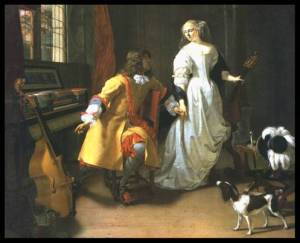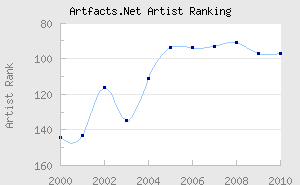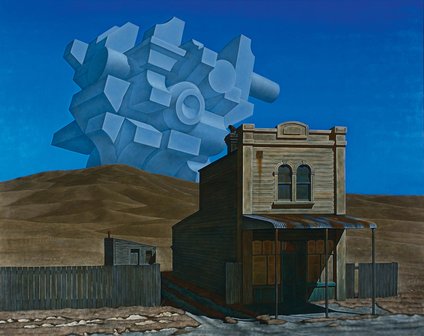A New Sentimental Art Market Era Pt. 4 -artmarketblog.com
 It has been said before that nostalgia prospers during recessionary times so, considering that the western world has just begun to recover from a major recessionary period, it would make sense that the art market is trending towards a focus on the nostalgic and sentimental. The length of time that this era of sentimentality and nostalgia will last is anyone’s guess, but given that the boom lasted longer than most expected, the recovery time for the contemporary sector of the market could be just as long – except that it probably won’t be. It would be nice to be able to report that the saying ‘Once Bitten, Twice Shy’ applies to the contemporary art market but, unfortunately, there are signs that the next puppets are already being groomed in preparation for the next inevitable contemporary cozenage. The only question is how long it will take for the art market to once again become hypnotised by the glitz and glamour of the consumerist contemporary art regime. In the mean time, it is great to see a level of intimacy, passion and involvement being brought back into the market that was conspicuously absent during the contemporary driven boom.
It has been said before that nostalgia prospers during recessionary times so, considering that the western world has just begun to recover from a major recessionary period, it would make sense that the art market is trending towards a focus on the nostalgic and sentimental. The length of time that this era of sentimentality and nostalgia will last is anyone’s guess, but given that the boom lasted longer than most expected, the recovery time for the contemporary sector of the market could be just as long – except that it probably won’t be. It would be nice to be able to report that the saying ‘Once Bitten, Twice Shy’ applies to the contemporary art market but, unfortunately, there are signs that the next puppets are already being groomed in preparation for the next inevitable contemporary cozenage. The only question is how long it will take for the art market to once again become hypnotised by the glitz and glamour of the consumerist contemporary art regime. In the mean time, it is great to see a level of intimacy, passion and involvement being brought back into the market that was conspicuously absent during the contemporary driven boom.
According to an article titled ‘Investors renew passion for modern masters’ ,which appeared in the Guardian newspaper, “When an alluring seated nude, La Belle Romaine, broke all records for a painting by the Italian artist Modigliani on Tuesday – selling for $69m (£42.7m) at auction in New York – the extraordinary price tag marked a historic moment in the art market. It shows that investors are turning back to the relative certainties of the modern masters and away from more risky contemporary art”. This statement confirms that buyers are taking a much more cautious approach to the art market by buying works that they are more familiar with and have some sort of affinity with – a key characteristic of a sentimental art market era. The care and thought that buyers are exhibiting when making purchases shows that they are seeking a much more intimate and passionate connection with the works of art that they are purchasing which is a trend that one would expect to see during a sentimental art market era. Another key characteristic of this sentimental art market era is a sort of nationalistic sentimentalism that is likely to emerge as disillusioned collectors and investors who experienced the contemporary art market correction seek more genuine and justifiable reasons for purchasing works of art – reasons that provide a more fulfilling, intimate and involved art collecting experience as opposed to the cold and calculated commercialism that characterised the contemporary art market boom. Nationalistic sentimentalism can be defined as the purchase of works of art from one’s own country out of a sense of pride and sentimentality.
Both these characteristics allude to a market that is seeking a more intimate and involved connection with the works of art they are collecting or investing in. I would expect that this trend will continue to develop throughout 2011 as the global art market attempts to heal the wounds that the emerging contemporary art market bubble inflicted. This will be the last post on this topic for the time being unless any further corroborating indicators come to light.
 **Nicholas Forrest is an art market analyst, art critic and journalist based in Sydney, Australia. He is the founder of http://www.artmarketblog.com, writes the art column for the magazine Antiques and Collectibles for Pleasure and Profit and contributes to many other publications
**Nicholas Forrest is an art market analyst, art critic and journalist based in Sydney, Australia. He is the founder of http://www.artmarketblog.com, writes the art column for the magazine Antiques and Collectibles for Pleasure and Profit and contributes to many other publications
Filed under: art, art auction, art investment, art market, art news, contemporary art, painting | Tagged: art investment, art market, artist, contemporary art, gallery, museum, painting | 2 Comments »












































